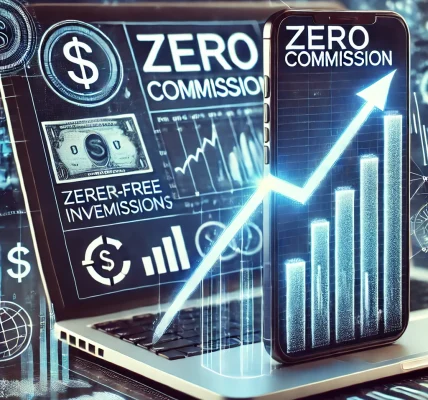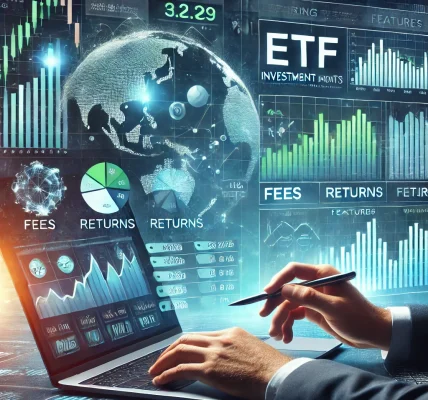Introduction
Investing has evolved significantly over the years, with technological advancements making it more accessible and interactive. One of the latest trends in the financial industry is social trading platforms, which enable investors to learn from and copy experienced traders. These platforms merge traditional investing with social networking, fostering a collaborative environment for both beginners and seasoned traders.
Are social trading platforms the future of investing? In this blog, we explore the concept of social trading, its benefits, risks, and whether it is a game-changer in the investment world.
1. What Are Social Trading Platforms?
Social trading platforms allow investors to observe and mimic the trades of experienced investors in real-time. Unlike traditional investing, where individuals conduct their own research and make independent decisions, social trading encourages a more community-driven approach.
1.1. How Do Social Trading Platforms Work?
- Investors sign up on a social trading platform and follow top traders.
- The platform provides tools to track expert traders’ performance, risk levels, and portfolio allocations.
- Users can either manually copy trades or use automated copy trading to replicate another investor’s portfolio.
- Some platforms also offer discussion forums, strategy-sharing, and educational resources.
Popular social trading platforms include eToro, ZuluTrade, NAGA, and Covesting.
2. Benefits of Social Trading Platforms
2.1. Accessibility for Beginners
One of the main advantages of social trading platforms is that they lower the entry barriers for beginners. New investors can learn from seasoned traders and replicate their strategies without needing deep financial knowledge.
2.2. Time-Saving and Convenience
For individuals who lack the time to research markets extensively, social trading provides a shortcut. By copying successful traders, investors can potentially achieve good results with minimal effort.
2.3. Transparency and Real-Time Insights
Social trading platforms provide detailed trader profiles, historical performance, risk ratings, and open trade visibility. This transparency helps investors make informed decisions when selecting a trader to follow.
2.4. Community and Learning Opportunities
Unlike traditional investing, which can be isolating, social trading fosters a collaborative environment. Traders can interact, discuss strategies, and improve their financial literacy through community engagement.
2.5. Automation and Copy Trading
Automated copy trading allows investors to set up their portfolios to mirror expert traders’ moves without manual intervention. This feature helps users take advantage of market opportunities even when they are not actively monitoring their investments.
3. Risks and Challenges of Social Trading
3.1. Dependence on Other Traders
Relying solely on others’ trading decisions without understanding market fundamentals can be risky. If the copied trader makes poor decisions, followers may experience significant losses.
3.2. Market Volatility and Emotional Trading
Market conditions change rapidly, and even successful traders can have losing streaks. Following a trader without assessing market trends can lead to potential losses.
3.3. Platform Reliability and Fees
Not all social trading platforms are trustworthy. Some may charge high fees, have security vulnerabilities, or lack regulation, which can pose risks to investors.
3.4. Risk of Herd Mentality
Social trading can sometimes lead to a herd mentality, where investors blindly follow trends without critical analysis. This can create market bubbles and increase exposure to speculative investments.
4. Are Social Trading Platforms the Future of Investing?
4.1. Increasing Popularity Among Millennials and Gen Z
Social trading aligns with the preferences of younger investors, who value transparency, social interaction, and digital accessibility. With the rise of fintech, these platforms are becoming more mainstream.
4.2. Integration with AI and Machine Learning
Many social trading platforms are incorporating AI-driven analytics, sentiment analysis, and machine learning algorithms to enhance decision-making. These advancements improve accuracy and help traders optimize their strategies.
4.3. Decentralized Finance (DeFi) and Blockchain Influence
The integration of blockchain technology and decentralized finance (DeFi) could further revolutionize social trading, offering more security, transparency, and reduced costs.
4.4. Regulation and Institutional Adoption
As social trading grows, regulatory bodies are likely to introduce stricter guidelines to protect investors. Additionally, institutional investors may adopt social trading strategies, further legitimizing the trend.
5. Should You Use a Social Trading Platform?
5.1. Who Can Benefit from Social Trading?
- Beginners who want to learn by observing experienced traders.
- Busy professionals who lack time for in-depth market research.
- Passive investors looking for an automated investment approach.
5.2. Who Should Be Cautious?
- Investors who prefer full control over their portfolios.
- Those with a low-risk tolerance.
- Individuals who lack understanding of risk management.
Conclusion
Social trading platforms have the potential to revolutionize investing by making it more inclusive, interactive, and transparent. While they offer numerous benefits, including accessibility, automation, and community learning, they also come with risks such as dependency on others’ decisions and market volatility.
For those considering social trading, it is crucial to conduct thorough research, choose reputable platforms, and diversify investments to mitigate risks. As fintech continues to evolve, social trading may well become an integral part of the investment landscape, blending traditional investing with the power of collective intelligence.




